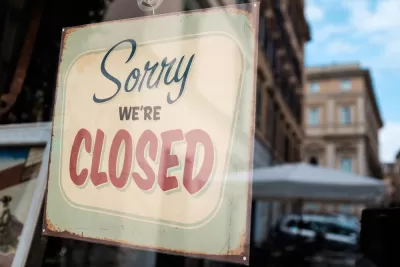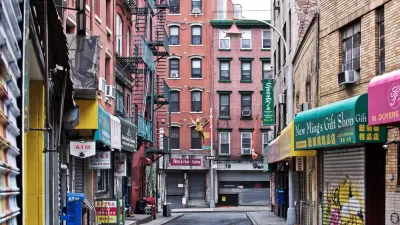Neighborhood level unemployment data estimates reveal the deepening social inequality of the current economic crisis.

Quoctrung Bui and Emily Badger sum up the state of the economy amidst the coronavirus pandemic in the summer of 2020:
The economic damage from the coronavirus is most visible in areas like Midtown Manhattan, where lunch spots have closed, businesses have gone dark and once-crowded sidewalks have emptied.
But some of the worst economic pain lies in other neighborhoods, in the places where workers who’ve endured the broadest job losses live. In corners of the Bronx, South Los Angeles or the South Side of Chicago, unemployment is concentrated to a breathtaking degree. And that means that other problems still to come — a wave of evictions, deepening poverty, more childhood hunger — will be geographically concentrated, too.
The article by Bui and Badger shares research estimating unemployment data down to the Census tract level by Yair Ghitza and Mark Steitz. "The federal government doesn’t report unemployment data down to the neighborhood level, so the two researchers modeled these fine-grained statistics in a way that makes them consistent with state and national surveys," explain Bui and Badger.
A working paper presenting the data is available on GitHub.
Deep economic disparities within cities are the main takeaway from the research findings, and the most outwardly visible signs of the economic downturn—the shuttered restaurants and retail businesses—aren't evidence of the worst of the economic situation. "These maps reflect, instead, where the workers who once staffed those restaurants, bars, hotels and offices commuted home at night," according to Bui and Badger.
The current findings, nearly five months into the pandemic in the United States, echo findings from much earlier in the pandemic in April, presented by Jonathan Stiles as well as researchers from the Urban Institute.
FULL STORY: In These Neighborhoods, the Jobless Rate May Top 30 Percent

Alabama: Trump Terminates Settlements for Black Communities Harmed By Raw Sewage
Trump deemed the landmark civil rights agreement “illegal DEI and environmental justice policy.”

Planetizen Federal Action Tracker
A weekly monitor of how Trump’s orders and actions are impacting planners and planning in America.

The 120 Year Old Tiny Home Villages That Sheltered San Francisco’s Earthquake Refugees
More than a century ago, San Francisco mobilized to house thousands of residents displaced by the 1906 earthquake. Could their strategy offer a model for the present?

In Both Crashes and Crime, Public Transportation is Far Safer than Driving
Contrary to popular assumptions, public transportation has far lower crash and crime rates than automobile travel. For safer communities, improve and encourage transit travel.

Report: Zoning Reforms Should Complement Nashville’s Ambitious Transit Plan
Without reform, restrictive zoning codes will limit the impact of the city’s planned transit expansion and could exclude some of the residents who depend on transit the most.

Judge Orders Release of Frozen IRA, IIJA Funding
The decision is a victory for environmental groups who charged that freezing funds for critical infrastructure and disaster response programs caused “real and irreparable harm” to communities.
Urban Design for Planners 1: Software Tools
This six-course series explores essential urban design concepts using open source software and equips planners with the tools they need to participate fully in the urban design process.
Planning for Universal Design
Learn the tools for implementing Universal Design in planning regulations.
Clanton & Associates, Inc.
Jessamine County Fiscal Court
Institute for Housing and Urban Development Studies (IHS)
City of Grandview
Harvard GSD Executive Education
Toledo-Lucas County Plan Commissions
Salt Lake City
NYU Wagner Graduate School of Public Service





























